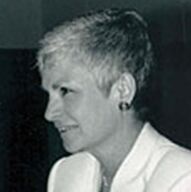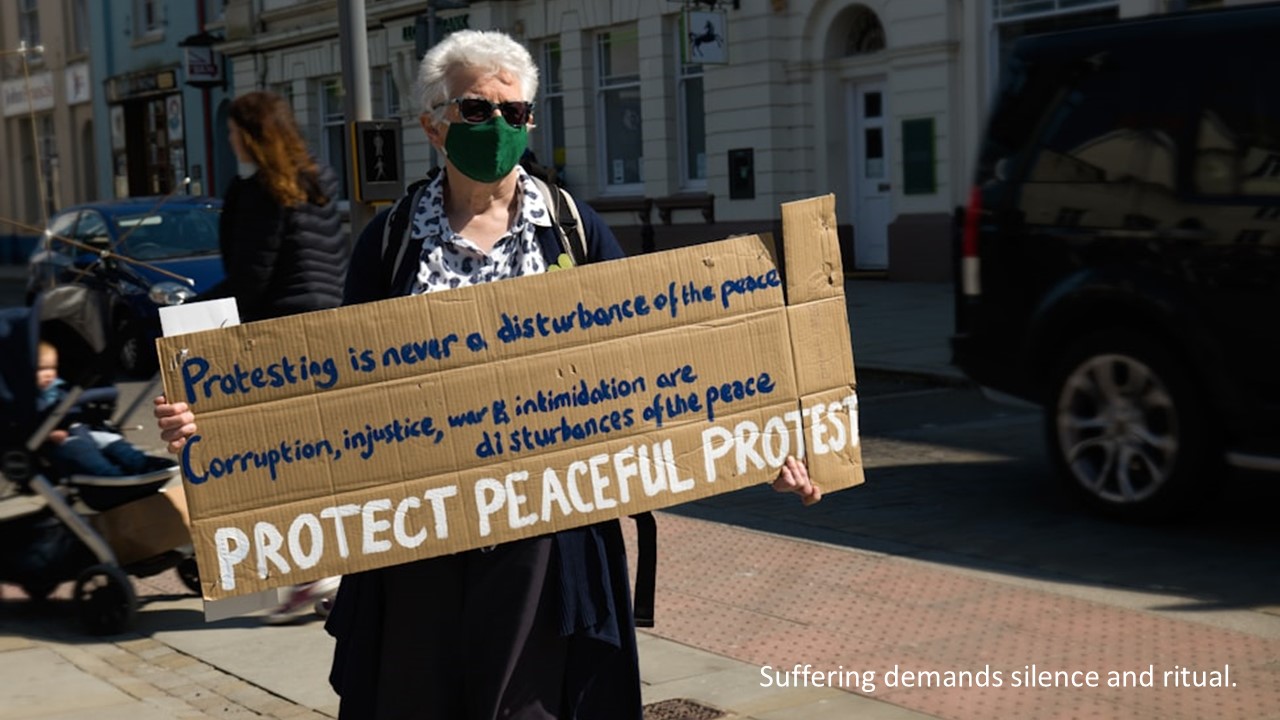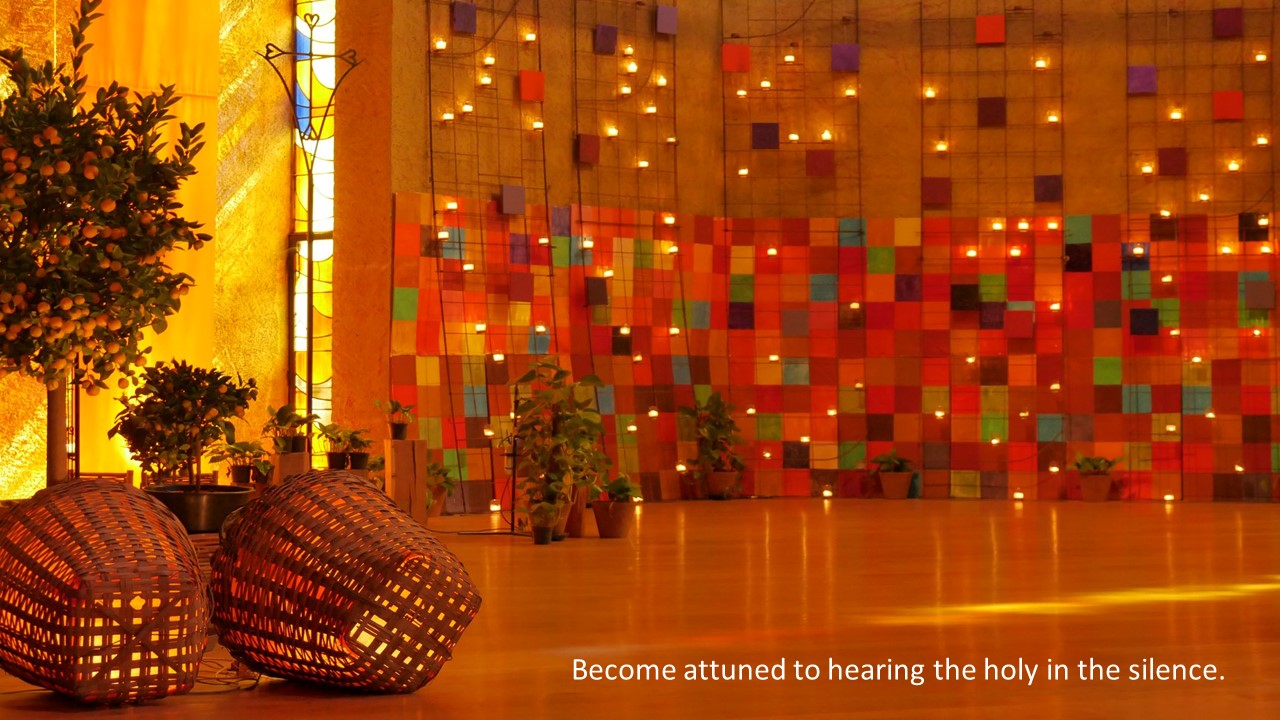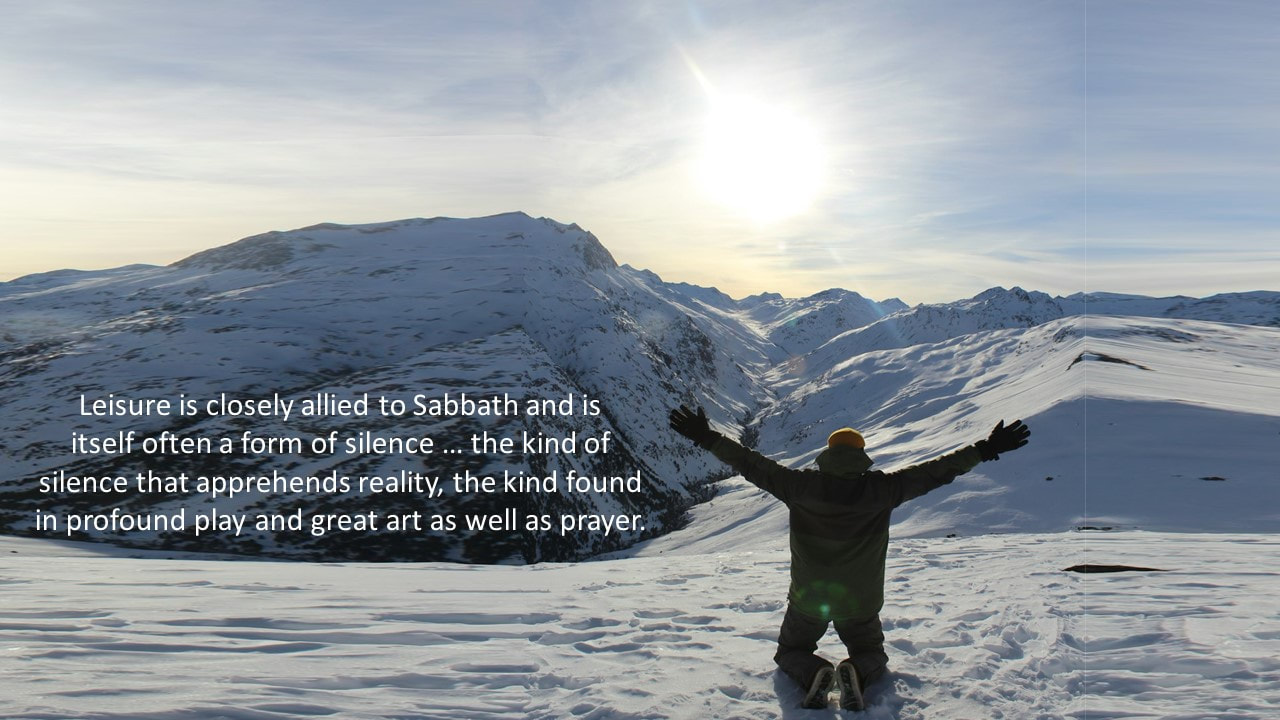The first week of each month has a short, image-backed quote with links to associated resources in the text below it. In other weeks, the short quote is taken from a longer one by the month's author, found below the image. The last week of the month has a short quote and questions to encourage reflection on all the month's quotations and images.
Maria Harris (1932-2005), our author for March, was an internationally acclaimed religious educator and feminist theologian who devoted much of her career to encouraging and supporting other women theologians.
|
Guided Meditation to use with short and long quotes:
For a 5 minute audio guided meditation to use with each week's quote, click the play button on the image. To pause, and restart, click in the same place. To see the image full screen as you listen, click the expand screen icon in the corner. |
|
|
Lectio Divina to use with longer quotes:
For an audio guided Lectio Divina to use with this week's longer quote, click the play button on the image. Allow 10-15 minutes for this practice. To pause, and restart, click in the same place. For a text version of the Lectio Divina meditation, click the button. |
|
Monday 4th March, 2024
Maria Harris, Proclaim Jubilee!: A Spirituality for the Twenty-First Century (Westminster John Knox Press, 1996), 11.
Image: Marc Pell, unsplash.com/@blinky264
Maria Harris was born in New York in 1932. Her father, who dies suddenly when Maria was only eight, had worked for the New York Times, and her mother was a high school teacher in the state education system. Maria was always bright, winning scholarships to a Catholic College and University in the State. However, after her first year at St John's University, instead of continuing her studies full time, Maria entered the Sisters of St Joseph, a Roman Catholic religious order in New York, who focused on teaching: see here. For five years Maria taught music at a variety of Catholic secondary schools in New York whilst completing her novitiate years in the Order. A more focused period of education followed, with Maria eventually completing a doctorate in Education (Religious Studies - having majored in English for her undergraduate degree) at the renowned Union Theological Seminary in 1971.
Maria left religious life in 1973, eventually marrying Gabriel Moran in 1986, with whom she had co-written Experiences in Community (Herder & Herder, 1968) some 18 years before. Moran was Professor of Education at New York University and, soon after their marriage, Maria became became Professor of Religious Education at Fordham University, having authored four other books about religious education in the intervening years. At this time, Maria's insistence on the important of aesthetics within teaching led to the publication of what remains one of her most significant theoretical texts, Teaching and Religious Imagination (Harper Row, 1987): see here. This was a productive period in Maria's output, during which she wrote Fashion Me A People: Curriculum and the Church (Westminster Press, 2989) - see here - and Women and Teaching: Themes for a Spirituality of Pedagogy (Paulist Press, 1988) - see here - which contains one of my favourite quotes: "The thing which does not fit in or is left out forcefully educates and miseducates everyone, since the things which is left out or forgotten regularly turns out to be the clue leading to new knowledge" (p. 21). Both books focused on themes that were increasingly central to Maria's work: justice, feminism, aesthetics and the central significance of spirituality in the role of all education.
From the same period comes her greatest written legacy for feminist theologians and a pedagogy of spirituality for women, in Dance of the Spirit: The Severn Steps of Women's Spirituality (Bantam Books, 1989), which you can read some sections of here. In it, Maria outlines the steps of Awakening; Dis-Covering; Creating; Dwelling; Nourishing; Traditioning; and Transforming, particularly focusing on the silencing of women in education and spirituality: silence as verb, as opposed to silence as noun, the usual focus of our quotes. Of silencing, Maria writes, "It would be difficult to find a more pervasive theme in the lives of contemporary women than the pervasive theme of silence, with its accompanying task of finding voice" (p. 182).
The book from which our quotes are taken, Proclaim Jubilee!: A Spirituality for the Twenty-First Century (Westminster John Knox Press, 1996), linked Harris' key ideas with the idea that the period of Jubilee proclaimed in Leviticus 25, was the work that crowned her written output and led to global invitations to lecture about a spirituality that was appropriate as the world moved into a new century.
Sadly, there is very little about Maria Harris available to access online. There is a five minute photo and narrative video about her life here, and an 18 minute similar version here. You can read an extensive biography of her life and influence on the Biola University website, here. This is a sadness, as I know from someone who was mentored by Maria and who, in turn, mentored me, that her legacy amongst women theologians over these decades still ripples tenderly through the corridors of religious education and feminist theology today.
Monday 11th March, 2024
Maria Harris, Proclaim Jubilee!: A Spirituality for the Twenty-First Century (Westminster John Knox Press, 1996), 106.
Image: Taize facebook page, 24th March, 2018
The short, image-backed quote, above, is taken from this week's longer quote, below, on pages 102, 103 and 106 of Maria Harris' book. To read more about the book, from which this month's quotes are taken, click here.
|
Listen to this week's longer quote:
To listen to the longer quote, below, being read, click the play button on the small version of the image next to or below this text. To see the image full screen as you listen, click the expand screen icon in the corner. |
|
'Jubilee is a great and majestic ritual … Like Sabbath, its proclamation is toward ceasing ordinary labor. ... The [Jubilee] tradition of waiting upon the Holy by pausing to let the land lie fallow is never far from the jubilarian imagination. As part of a jubilee liturgy, and placed at its centre, the particular power of this step lies in its fostering the conditions for necessary listening—the “centering down” that Quakers speak of—in order to wait upon that One variously invoked as the Holy, the Mystery at the core of the universe, Jehovah, or the Creator Spirit—the One some of us call God or the Great Mother and others refer to as “beyond all names”—so that we might hear what the Holy requires of us as persons and as communities. We listen so that we might find ways to proclaim liberty throughout the land and so to search out what belongs to whom, in order to give it back.
As this century ends and another begins, people of many religious paths—even of none—have begun to observe regular periods of such stillness as part of their personal spirituality, pausing daily for twenty- or thirty-minute periods not to address but to be addressed by and to listen to the Holy. Through such practices, they have become attuned to hearing the Holy not only in human voices but in the cries of the earth and the headlines of the newspaper. They have also become attuned to hearing the Holy in the silence.
Jubilation, however, is a communal tradition; therefore, at this point in the Jubilee liturgy, persons bring the power such practice develops in their private lives to listening together in community, as a corporate task where one another’s presence is a source of strength. They wait. They cultivate stillness. … Always they make this step central, neither rushing it nor forgetting it. Sabbath candles lighted, they refuse to be anxious. Instead, they engage in emptying their minds and hearts of busyness.'
Monday 18th March, 2024
Maria Harris, Proclaim Jubilee!: A Spirituality for the Twenty-First Century (Westminster John Knox Press, 1996), 32.
Image: Marcus Bräuer, unsplash.com/@m_of_k
The short, image-backed quote, above, is taken from this week's longer quote, below, on pages 31-32 of Maria Harris' book. To read more about the book, from which this month's quotes are taken, click here.
|
Listen to this week's longer quote:
To listen to the longer quote, below, being read, click the play button on the small version of the image next to or below this text. To see the image full screen as you listen, click the expand screen icon in the corner. |
|
'From early in its promulgation, Sabbath included the regular practice of justice. It was an ethical and moral teaching as well as a liturgical rite, a statement about human beings’ relations with other humans (spouse, children, enslaved and indentured workers, strangers). It extended much further than the human community, however. Sabbath also assumed concern for other animals and the earth: the four-leggeds, the winged ones, the gilled ones. And only then, when the ceremonial and ethical were in place, did the command to stop become transferred into the command to rest.
As such, Sabbath becomes a time for genuine listening and for the recollection in tranquillity that listening makes possible. As we welcome the Sabbath of full and complete rest … we can become attentive to the suffering and pain in the world. In honoring rest, Sabbath cessation signals the very practical import of education to leisure. Leisure is closely allied to Sabbath and is itself often a form of silence. But it is the kind of silence that apprehends reality, the kind found in profound play and great art as well as in prayer. Actually, only those who are silent hear, and those who keep on talking do not hear. Sabbath rest reminds us that cultivating such leisured silence does not lead to “dumbness” or “noiselessness.” Instead, as a restful waiting-on reality, it eventually impels us onto our knees in adoration and into the mystery-laden sunlit moments when our ordinary ways of doing are suspended and the ways of not-doing instruct us in welcoming Being itself. Encountering that Being then returns us, refreshed, to our world.'
Monday 25th March, 2024
Maria Harris, Proclaim Jubilee!: A Spirituality for the Twenty-First Century (Westminster John Knox Press, 1996), 106.
Image: Jaanus Jagomägi, Tallinn, Estonia, unsplash.com/@jaanus
The last week of each month offers some questions to help you reflect further on its quotations and images, and how they resonate with your own spiritual journey and relationship with God.
You can engage with these using the written text or the audio version of the questions, below.
The last week of each month offers some questions to help you reflect further on its quotations and images, and how they resonate with your own spiritual journey and relationship with God.
You can engage with these using the written text or the audio version of the questions, below.
|
Listen to the reflection questions:
To listen to the reflection questions, below, being read, click the play button on the 'Reflect ...' image next to or below this text. To see the image full screen as you listen, click the expand screen icon in the corner. |
|
Reflection questions:
Before reflecting on this month's quotes and images, take time to re-ground yourself in your body.
Perhaps take a few slow breaths, feel your feet on the floor and be aware of how your body feels in this moment.
1) Read back over or listen again to this month's quotes and spend time looking at their associated images. As you do so, note a phrase or image that draws your attention. If this is a phrase, you might like to write this out in a journal or on a piece of paper where you will see it regularly. Consider reading aloud several times what you have written to help the words sink more deeply into your heart. If an image resonates with you, let your gaze rest lightly on it for a couple of minutes, allowing it to speak to your heart. Consider using it as a screensaver for a while, or perhaps print it out and place it somewhere that you will see it often.
2) What emerges as you sit with the phrase or image that attracted your attention? Does a new insight or a question, emotion or sensation arise? Take some time to write down and ponder on whatever you notice.
3) Where can you see hope in the midst of what is emerging in you, for yourself, your neighbour, your community, or the planet? How might this impact your daily life and those with whom you share it?
4) In the days and weeks to come, how can you stay open to what you have discovered from your reflections?
Take some time to give thanks for the hope that you have found in this month's quotes and images.
Before reflecting on this month's quotes and images, take time to re-ground yourself in your body.
Perhaps take a few slow breaths, feel your feet on the floor and be aware of how your body feels in this moment.
1) Read back over or listen again to this month's quotes and spend time looking at their associated images. As you do so, note a phrase or image that draws your attention. If this is a phrase, you might like to write this out in a journal or on a piece of paper where you will see it regularly. Consider reading aloud several times what you have written to help the words sink more deeply into your heart. If an image resonates with you, let your gaze rest lightly on it for a couple of minutes, allowing it to speak to your heart. Consider using it as a screensaver for a while, or perhaps print it out and place it somewhere that you will see it often.
2) What emerges as you sit with the phrase or image that attracted your attention? Does a new insight or a question, emotion or sensation arise? Take some time to write down and ponder on whatever you notice.
3) Where can you see hope in the midst of what is emerging in you, for yourself, your neighbour, your community, or the planet? How might this impact your daily life and those with whom you share it?
4) In the days and weeks to come, how can you stay open to what you have discovered from your reflections?
Take some time to give thanks for the hope that you have found in this month's quotes and images.
|
To request the weekly 'Quoting Silence: A month with ...' emails each Monday, with links to the month's author page on the website, click this button.
|
|
To return to the 'Quoting Silence: A month with ...' Collection, click this button.
|





